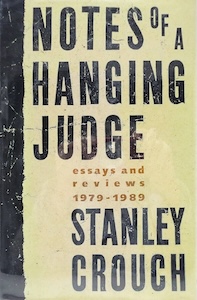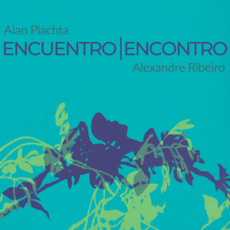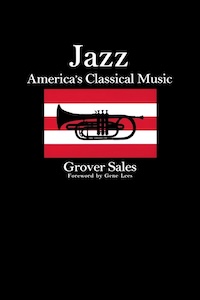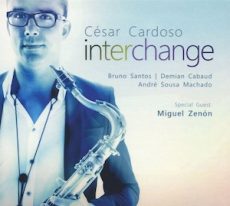
On The Bookshelf
Notes Of A Hanging Judge | Stanley Crouch
Notes Of A Hanging Judge: Essays and Reviews, 1979-1989 is a 1990 collection of essays by Stanley Crouch that critically examines the American Civil Rights Movement, Black culture, and politics, arguing the movement became “loco” and self-defeating despite its initial nobility. The book features sharp, often controversial, critiques of figures like Jesse Jackson and artists like Toni Morrison and Spike Lee, using a blend of insider passion and journalistic rigor to analyze the Black experience in America.
The title refers to Crouch’s role as a harsh judge of the Civil Rights Movement, similar to a pirate-turned-judge who was hard on his former comrades. The book includes essays on race relations, Black middle-class life, the Bernhard Goetz case, Black homosexuality, and profiles of leaders like Jesse Jackson.
Crouch views the Civil Rights Movement as a noble cause that became mired in self-defeating nationalism and a lack of spiritual depth, losing its original majesty. Written with a virtuosic prose style, it balances passionate involvement with a reporter’s rigor, offering unique perspectives on public issues. He covers a wide range of topics, from politics and social issues to art and travel, often focusing on the African-American experience.
Notes Of A Hanging Judge: 1990 | Stanley Crouch
Oxford University Press

Daily Dose Of Jazz…
Alan Plachta was born on November 30, 1981 and raised in Buenos Aires, Argentina. Recently recorded in NYC his last album “Un viaje” in collaboration with Richard Nant, featuring Luis Perdomo on piano, Sam Sadigursky on reeds, Satoshi Takeishi on drums and Matt Pavolka on bass.
As a composer, arranger and conductor he has worked with the Boris Big Band, Orquesta Sudamericana, Kai de Raiz, and Orquesta de Cuerdas Elvino Vardado in collaboration with Juan Pollo Raffo.
Alan has played and/or recorded with numerous South American musicians such as Roberto Taufic, Hugo Fattoruso, Urbano Moraes, Daniel Maza, Robert Vincs, Alex & Nilusha, Alexandre Ribeiro, Ana Luiza and Luis Felipe Gama, Nicolás Ospina, Celeste Carballo, Ligia Piro, Liliana Herrero, and Cecilia Pahl among others.
A leader or co-leader, he has recorded five albums, the first in 2005. A prolific arranger and producer Nussbaum has collaborated as guitarist and guest arranger for Cambrio de Estacion, Roma, Soy Una Tarada, Desmesura, Este Tiempo, Ensamble Real Book Argentina, and Y De Amor No Supe Nada.
As a guitarist he has recorded ninetten albums and his compositions are included in Real Book Argentina. His educator role has Adam teaching ear training, arrangement, harmony and guitar. He is in charge of the Musical Language´s Technichs at the Tecnólogo en Jazz y Música Creativa career at UTEC.
Guitarist, composer, arranger and educator Alan Plachta continues to explore his music and his teaching.
More Posts: arranger,bandleader,composer,educator,guitar,history,instrumental,jazz,music

On The Bookshelf
Jazz: America’s Classical Music | Grover Sales
Jazz critic Grover Sales takes the reader on a journey of introduction to the history, complexity and criticism of the music in Jazz: America’s Classical Music. This book illustrated with photographs, is considered a classic text and an ideal guide for both beginners and those familiar with the genre.
In an engaging and conversational style, the renowned jazz teacher tells of the lives and music of the greats like Ellington, Tatum, Hawkins, Coltrane, Parker, Hines, Goodman, Armstrong, and many others. He does this with a mix of important facts, fascinating anecdotes, and brilliant interpretations.
The author was a prominent figure in the jazz world, he taught at Stanford University and worked as the publicity director for the Monterey Jazz Festival.
Jazz: 1984 | Grover Sales
Prentiss-Hall Press

Daily Dose Of Jazz…
Joe Alterman was born November 16, 1988 in Atlanta, Georgia and graduated from New York University with both a Bachelor’s and Master’s in Jazz Piano Performance.
He has performed at iconic venues including the Kennedy Center, Lincoln Center, Birdland, and Blue Note, sharing stages with jazz greats like Houston Person, Les McCann, and Ramsey Lewis. He also had the privilege of opening for Dick Gregory at the Kennedy Center.
He leads his trio or performs solo with a deep groove, bluesy touch, and an exuberance that’s hard to resist, his playing is both deeply rooted and refreshingly modern. He has recorded eight critically acclaimed albums to his name, including the 2023 release Joe Alterman Plays Les McCann: Big Mo & Little Joe, Alterman continues to evolve as a recording artist while honoring jazz’s deep traditions.
His creativity extends to his cultural leadership and writing. As the Executive Director of Neranenah, an Atlanta-based Concert & Culture series, he celebrates Jewish contributions to music and the arts. His writing has also garnered acclaim, he has penned liner notes for three Wynton Marsalis and Jazz at Lincoln Center Orchestra albums. Alterman was the subject of Nat Hentoff’s final piece on music and in 2025, he was featured on President Jimmy Carter’s Grammy-winning album, Last Sundays In Plains: A Centennial Celebration.
Pianist, composer, writer, and cultural curator Joe Alterman continues to record and swing with style all over the world.
More Posts: bandleader,composer,history,instrumental,jazz,music,piano,writer

Daily Dose Of Jazz…
César Cardoso was born on November 10, 1982, in Leiria, Portugal. At only seven years old he dedicated his time to studying music, From 2004 to 2008 he studied at Hot Clube de Portugal’s Jazz School, where he had lessons with Jorge Reis and Pedro Moreira and started to distinguish himself as a jazz musician. 2008 had him enrolled at Escola Superior de Música de Lisboa, where he continued to work with Jorge Reis and Pedro Moreira. Completing a Jazz Bachelor Degree in saxophone performance, he became a member of the dixieland group Desbundixie with whom he recorded Kick’n Blow in 2007 and Up 2 Nine in 2009.
In 2010, César recorded his debut, Half Step, with his quintet at that time followed with a second album, Bottom Shelf, was released five years later in Hot Clube de Portugal, and features his original music this time written for His third album Interchange, was recorded with special guest, Miguel Zenón on alto saxophone.his quartet. His fourth album, Deice of Tenors, is a large ensemble recording.
He published the book Teoria do Jazz (Jazz Theory), with Chiado Editora, the first book ever written in Portuguese about the theoretical bases of Jazz, thought through to serve as a handbook for jazz students. His second book, a complement of the first, is titled Teoria do Jazz – Exercícios. Cardoso has composed and arranged for big bands, such as the Orquestra Jazz de Leiria and the Orquestra do Hot Clube de Portugal.
Saxophonist César Cardoso has won awards, became the first Portuguese musician to become an Artist Henri SELMER Paris, completed his PhD in Music and Musicology, and continues to perform, compose, arrange and teach at the Universidade de Évora in the Jazz degree program and is the pedagogical director of Escola de Jazz de Leiria.
More Posts: bandleader,history,instrumental,jazz,music,saxophone




